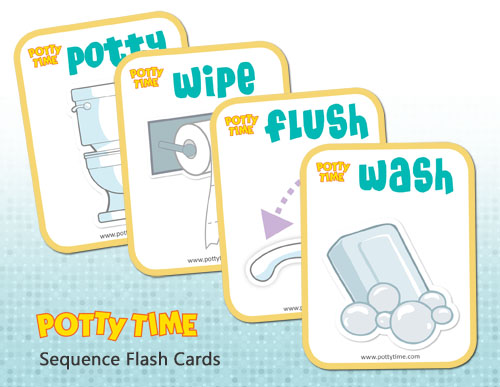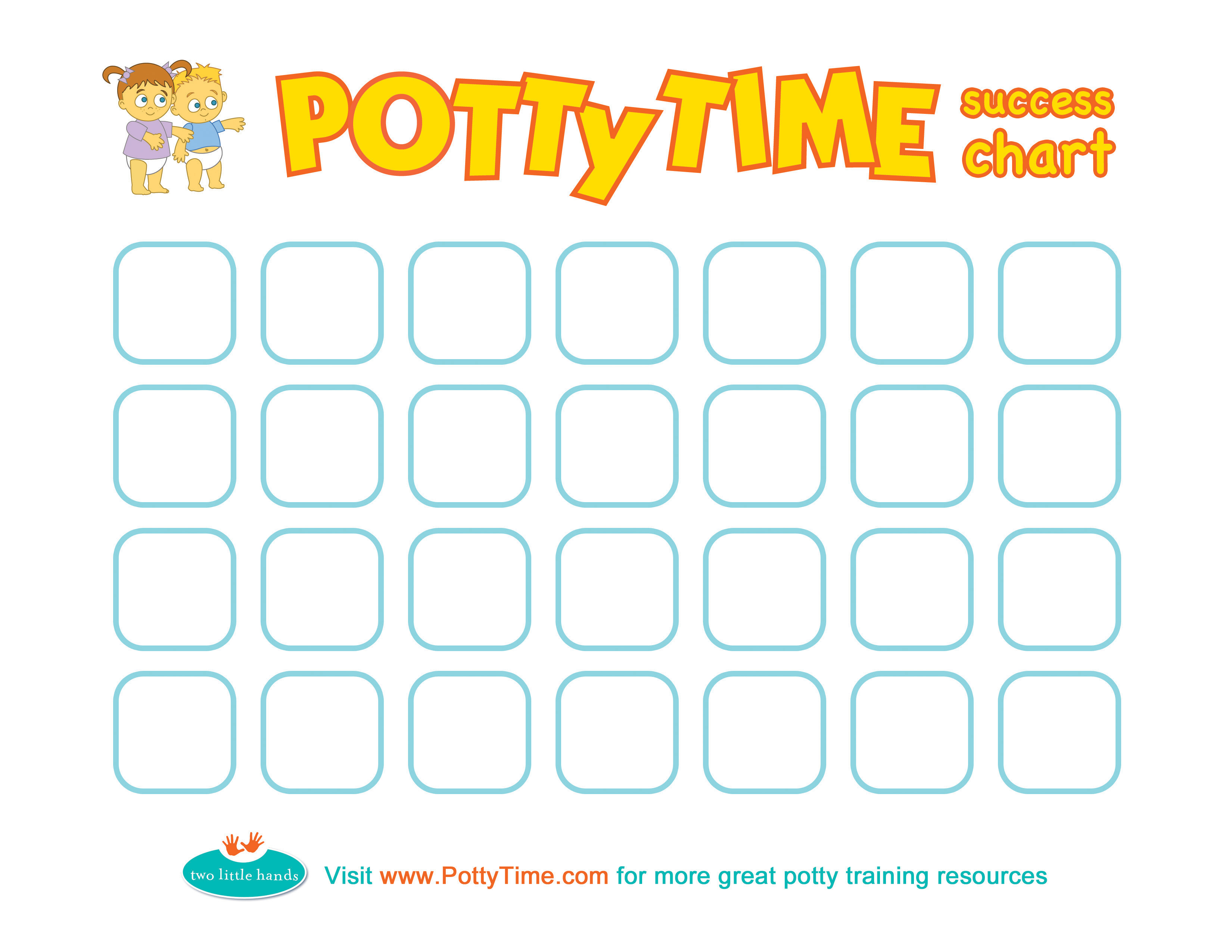As a special education preschool teacher, parents often ask me for advice on how to potty train their children. While working with children who have a variety of needs over the years, I have picked up some good tips. Potty training a child with special needs is not all that different than potty training any other child. However, there are some important factors you’ll want to take into account while planning for and implementing potty training strategies for your child with special needs.
Your expectations
It is important to keep in mind that when potty training a child with special needs, you will need to focus more on developmental stage than on actual chronological age. If you find that you need to postpone potty training until your child is a bit older than her peers, it is okay. Pushing the issue will only result in frustration and setbacks, so patience, as always, is key. It’s also important to remember that each child is different, and what works for one may not work for another. Also, be flexible. It is essential to try new things if what you are doing is not working.
Your child’s communication skills
Potty training will go much more smoothly if your child has the ability to communicate with you in some way – whether through spoken words, signs, pictures – or a combination of these things before you start.
If your child is already communicating, the next step is to teach the potty routine by using words, signs, and pictures. These tools help both verbal and non-verbal children know what is expected of them. Rachel does a great job explaining the basic steps and signs involved in the potty routine (potty, wipe, flush, and wash) in the Potty Time DVD. You can download the Potty Time Sequence Cards (shown below) to create a picture flash card for each of these four steps.
Here are some ways you can use the cards:
- Print and laminate the cards, rounding the corners for safety.
- Teach the sign for each step as you point to the corresponding card.
- Mix the cards up, and then help your child put the pictures in the correct order.
- Take the cards to the bathroom and refer to each one during your child’s potty routine.
- Velcro the cards to a wall or a poster. Remove a card as your child completes each step.
- Encourage your child to move toward independence by asking her to select a card before each step or removing a card after each step in the potty routine.
- If your child needs more specific reminders about smaller steps within each task, create your own cards to use. For example, you may go online to find pictures of water, soap, lathered hands, rinsed hands, and dry hands to create cards for each step of the hand-washing routine.
Your child’s physical development
It’s important to take your child’s physical abilities into account when potty training. You may want to hold off on potty training until your child can sit up, either by himself or with just a little assistance. And, as with any child, potty training will be a little easier if your child can move to and from the potty and participate in dressing or undressing.
As parents, we tend to be surprised with how advanced our children really are. Don’t let your preconceptions lead you to believe that children with delays in fine or gross motor skills can’t, for example, pull up their underwear. Always assume they can do it rather than assuming they can’t. In my experience, children will let you do as much for them as you are willing to do. Often a child will perform a task independently as soon as she knows that you expect her to do it. If after lot of encouragement and practice, your child is experiencing a high degree of frustration, provide the needed assistance and try again later.
If, after given time to practice, your child truly cannot seem to be able to detect when she needs to go, talk to your pediatrician.
The potty training process
After deciding your child is physically ready, you’ll want to consider taking small incremental steps in toilet training.
First, assess your child’s fears. Some children are afraid of toilets because the sound of flushing frightens them – automatically flushing toilets in public restrooms can contribute to this fear! Some are afraid of what will happen if they accidentally fall in. Some children feel threatened when they see that something that was a part of their body is being taken away. Others have anxiety about having an accident or just not doing it right.
If your child has toilet-related fears, start by having your child sit on your lap fully clothed when you go to the bathroom. From there, get her to sit on the potty with her clothes on. When your child has been successful with your request, move on. Let her put goldfish crackers in the toilet and then flush them away to help her get used to the sound of flushing. Use a lot of positive, encouraging talk any time your child is in the bathroom. You are shaping the behavior you want by slowly bringing it to the next level.
Children with special needs often thrive on routine and predictability may do best with the adult planning and enforcing the routine. If your child has a hard time transitioning from one activity to another, try preparing him for the upcoming trip to the potty by saying something like, “In five minutes, it will be time to go potty.” Editor’s note: The Potty Watch (not our product) can also help smooth transitions and enhance predictability.
Give your child a way to see his progress. Use a potty chart to track daily successes. Circle a date on the calendar when you will go shopping for big-boy or big-girl underwear. Print a certificate to celebrate steps toward success, such as having a dry day or a dry night.
Reinforcing desired behavior
Positive reinforcement works! The trick is finding what works for your child. You might have to switch it up or give choices to find out what kinds of rewards are most effective for your child.
Some children respond well to tangible rewards such as small prizes or treats, while others respond best to intangible rewards such as hugs or doing a silly dance together. Maybe a combination of these positive reinforcements will be most effective for your child. Whatever you do, make it a party when your child is successful!
One of the biggest steps toward toileting independence is learning to sit on the potty long enough to get the job done. Sitting still and waiting can be difficult for any child. To help your child learn to sit on the potty, reading, singing or playing with a toy – electronic toys work well because they can hold a child’s attention a little longer. Many parents set aside a special book, game or toy for their child to play with only when sitting on the potty.
When accidents happen, and they WILL happen, don’t make a big deal about them. Have your child help in cleaning up the mess as much as she is able.
The rewards for both of you
Potty training can be challenging or frustrating at times, but it can also be a lot of fun. Potty training a special needs child can bring about different challenges, or the process may take longer, but all the hard work pays off for everyone in the end. You get freedom from diapers and your child gets to experience a new level of independence and feelings of pride and accomplishment. Definitely worth it.
_______________
For more information about potty training a child with specific disabilities, check out this article from the American Academy of Pediatrics: TOILET TRAINING CHILDREN WITH SPECIAL NEEDS




This is a great article! Thanks! I have a four year old with Down syndrome and we have been working on potty training for…well, ages. My daughter is physically capable of performing all of the tasks with using the potty: She will ask to go to the bathroom. She can take down her pants, get on the potty, wipe, flush, and pull up her pants. She LOVES to sit on the potty and takes great pride in “trying really hard”.
The issue we have is that when she sits, she doesn’t go. After consulting with her teachers, therapists, and pediatrician, it seems that it may be a motor planning issue. We suspect she doesn’t know how to willfully release her bladder.
We have very sporadic success with toileting. She truly does try so hard, but I don’t know how to “teach” her to release her bladder. If you have any suggestions, I’d love to hear them! Thanks!
Here are my thoughts. I talked with a collegue of mine and she had a student who was having the same issues. An outside professional had the same suggestions I was going to suggest and you may have tried this already. Have her drink lots and lots of water. It’s great that she is willing to sit for you. Spend a lot of time on the potty, playing games, reading books or doing a preferred activity. If she goes, make a party of it, give rewards, make it a big deal. If she doesn’t go try again in 30 minutes. If she is using pull-ups you may want to save them for when she is sleeping or have her wear her underwear underneath so she can feel when she is wet. It may also help to keep a log of her potty attempts so you can look for patterns on when she goes potty.
A couple more thoughts. It sounds like the Potty Time Reminder Watch would be perfect for you for 30 minute reminders. Also, I love the Potty Time app (available for Droid and iPhone). It has a progress chart, fun songs, books, games and you can have Rachel “call” your daughter. Love it! And it’s free!